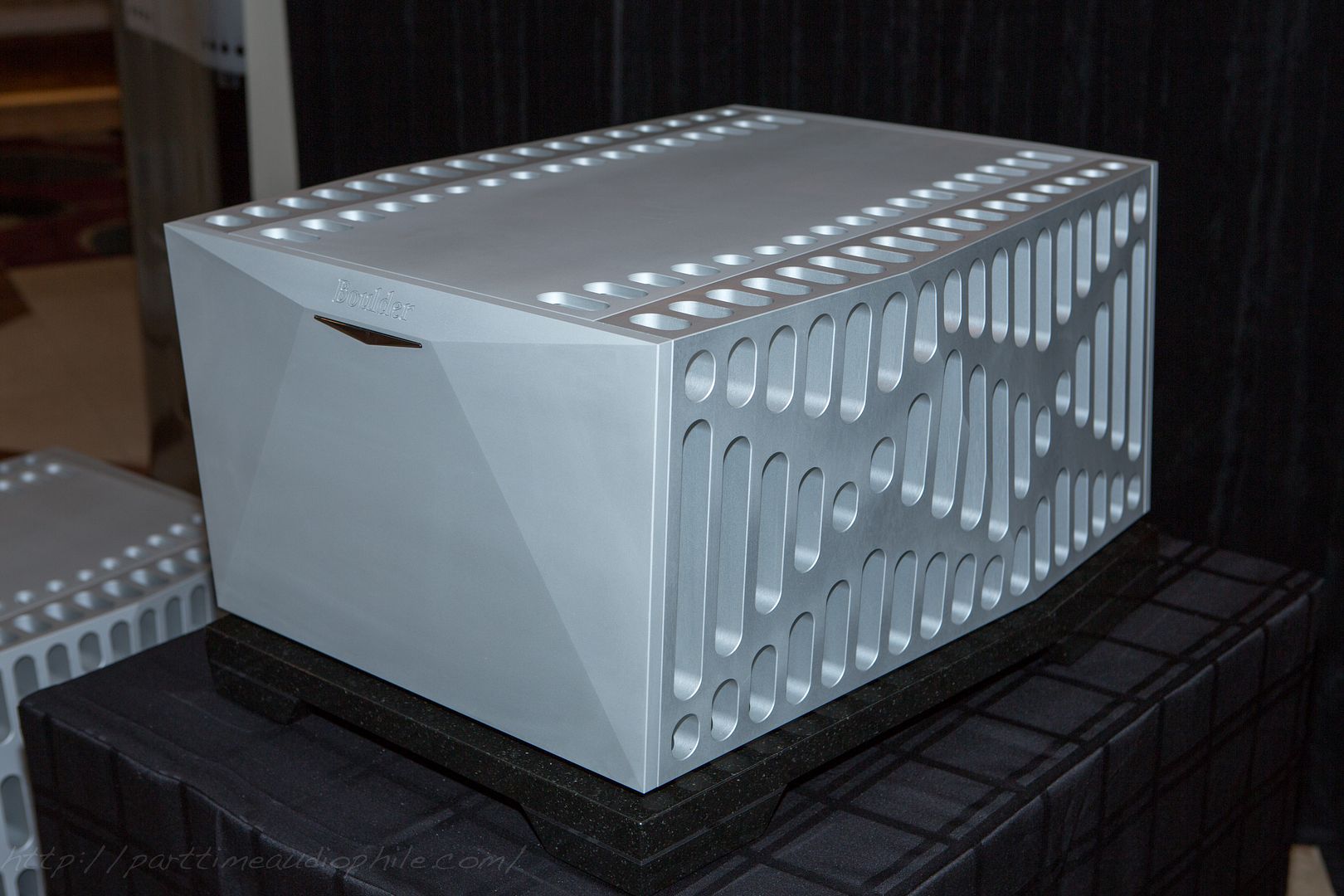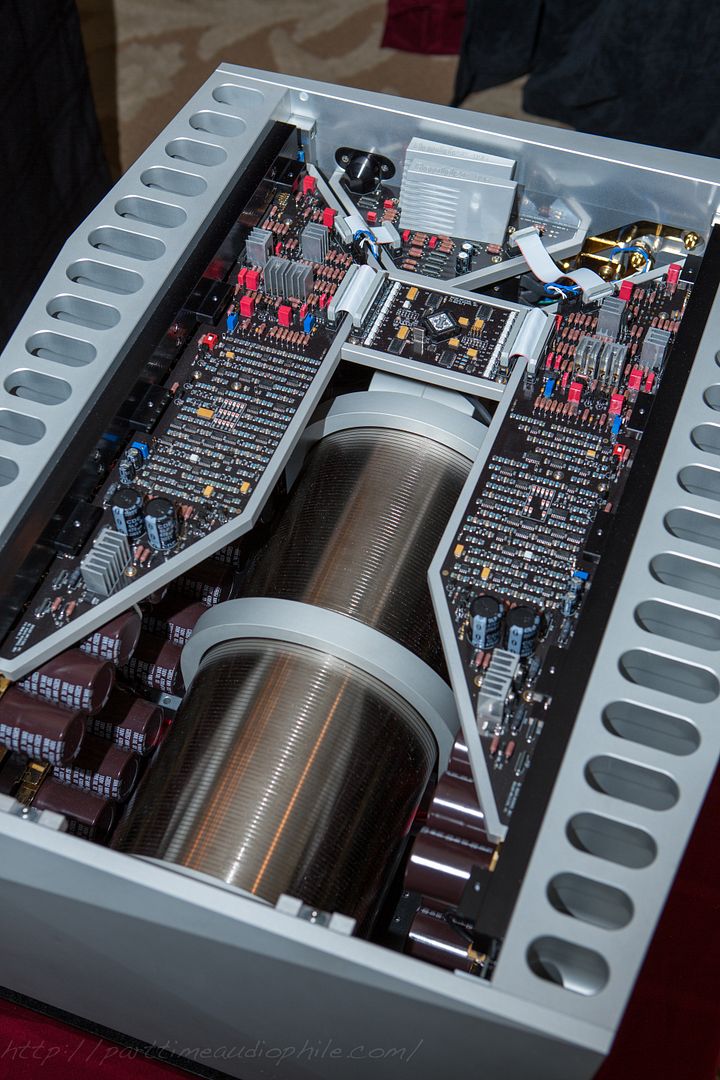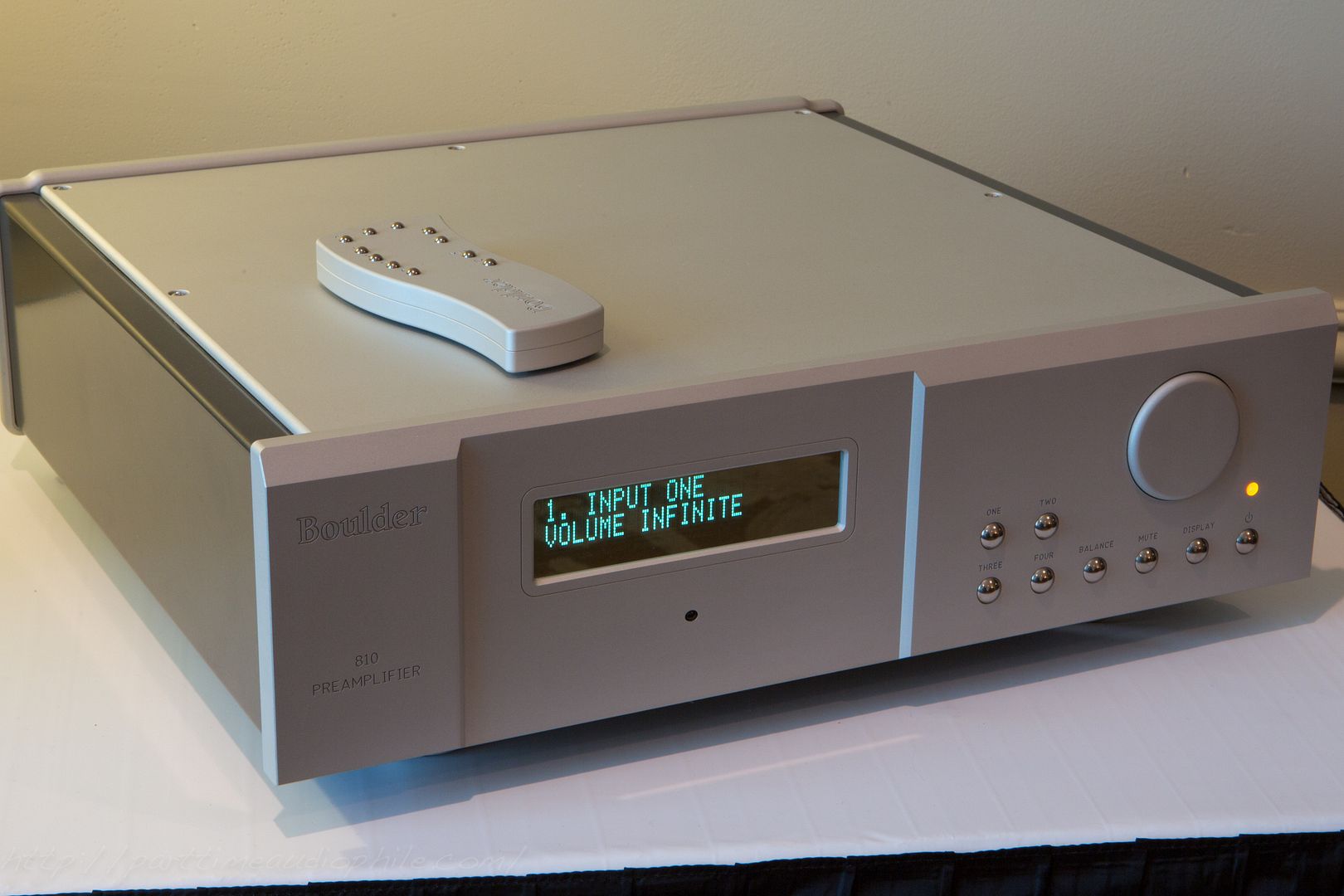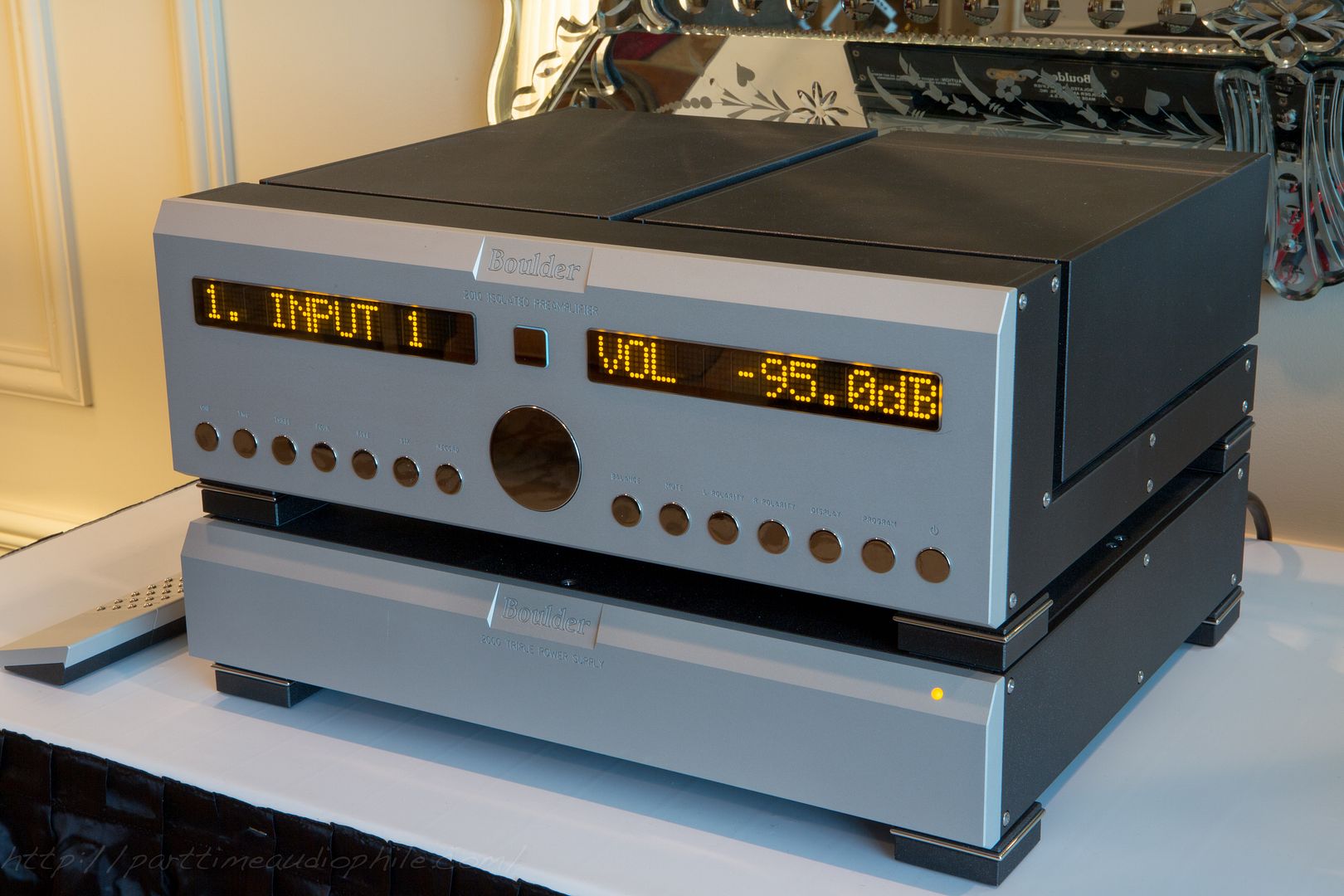
It’s hard not to laugh out loud in sheer amazement at seeing the big boulder amps stacked up like this. This is considerably beyond what the word “massive” can capture.
All audio circuitry within the 3060 is linear Class A, primarily derived from Boulder’s 3050 Mono Amplifier. Bias current is actively monitored and adjusted in order to increase efficiency and reduce wasted radiated heat energy. The 3060 utilizes 120 output devices to generate power output of 900 watts-per-channel into any load. It is capable of massive current swings, enabling the amplifier to drive any loudspeaker to realistic performance levels. Units will only be shipped operating at 240V AC mains feed (no 100V or 120V units will be produced) in order to guarantee full-rated power output. A complete array of protection and status monitoring circuits are continuously active. All metalwork is cut on Boulder’s own CNC machining centers and features the distinctly modern, angled appearance unique to all 3000 Series products. A black granite and stainless steel platform is cut and polished to match the angled surfaces of the amplifier and is shipped with each 3060. The US manufacturer’s suggested retail price for the 3060 is $115,000 (prices will vary outside of the United States).
Shown flanked by a pair of 3050 monos ($205k/pair), in case you need to upgrade to 1,500wpc of Class A power. Yeah. Anyway. I was struck by the giant shielded toroidal in the center of the amps — yeah, it’s a plutonium core. Mmm hmm. Time to go ….









So this is where Scotty dumped the Warp Core! Whew
Local brownout each time these are turned on! They must wgt a ton. Beautiful though. Having heard some of the Boulder gear locally, quite nice. Love to have it, but … ?
450lbs … each.
Asian audiophiles with more money than Croesus are who buys this gear. Or so I’ve been told by one audio insider who says that a number of companies actually have design teams that target this very particular over-the-top overseas market.
Dear god, looking inside these amps reminds me of looking the innards of a hydro electric plant.:)
Or a nuclear bomb?
Holy moley! Who buys this stuff?
Hehe….when tooo much is never enough!